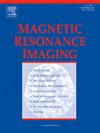通过将重采样k空间数据映射到重采样k空间数据,实现MRI重构的自监督学习
IF 2
4区 医学
Q2 RADIOLOGY, NUCLEAR MEDICINE & MEDICAL IMAGING
引用次数: 0
摘要
近年来,将深度学习(DL)应用于磁共振成像(MRI)重建方面取得了重大进展,而磁共振成像(MRI)重建传统上依赖于全采样数据。然而,现实世界的临床场景经常表明,由于生理限制(如器官运动)和物理限制(如信号衰减),完全采样的数据可能具有挑战性或不可能获得。在本文中,我们引入了一种自监督深度学习方法,称为通过数据欠采样的随机自监督学习(简称RSSDU),该方法能够高效、准确地从欠采样的MRI数据中重建图像,而不需要完全采样的数据集作为参考。所提出的方法涉及对获取的k空间数据进行两次重新采样,以使用与原始采集相同的欠采样模式生成两个子集,尽管具有不同的加速因子。随后,训练网络学习以监督的方式从一个集合映射到另一个集合。大量实验表明,RSSDU方法在峰值信噪比和结构相似度指标测量方面优于几种知名的自监督方法,包括SSDU和K-band。本文章由计算机程序翻译,如有差异,请以英文原文为准。
Self-supervised learning for MRI reconstruction through mapping resampled k-space data to resampled k-space data
In recent years, significant advancements have been achieved in applying deep learning (DL) to magnetic resonance imaging (MRI) reconstruction, which traditionally relies on fully sampled data. However, real-world clinical scenarios often demonstrate that the fully sampled data can be challenging or impossible to obtain due to physiological constraints, such as organ motion, and physical constraints, such as signal decay. In this paper, we introduce a self-supervised DL approach, termed randomly self-supervised learning via data undersampling (abbreviated as RSSDU), which is proficient in efficiently and accurately reconstructing images from undersampled MRI data without requiring fully sampled datasets as references. The proposed method involves resampling the acquired k-space data twice to generate two subsets using the same undersampling pattern as the original acquisitions, albeit with different acceleration factors. Subsequently, a network is trained to learn to map from one of the sets to the other in a supervised manner. Extensive experiments demonstrate that the RSSDU method outperforms several well-known self-supervised methods, including SSDU and K-band, regarding peak signal-to-noise ratio and structural similarity index measurement.
求助全文
通过发布文献求助,成功后即可免费获取论文全文。
去求助
来源期刊

Magnetic resonance imaging
医学-核医学
CiteScore
4.70
自引率
4.00%
发文量
194
审稿时长
83 days
期刊介绍:
Magnetic Resonance Imaging (MRI) is the first international multidisciplinary journal encompassing physical, life, and clinical science investigations as they relate to the development and use of magnetic resonance imaging. MRI is dedicated to both basic research, technological innovation and applications, providing a single forum for communication among radiologists, physicists, chemists, biochemists, biologists, engineers, internists, pathologists, physiologists, computer scientists, and mathematicians.
 求助内容:
求助内容: 应助结果提醒方式:
应助结果提醒方式:


